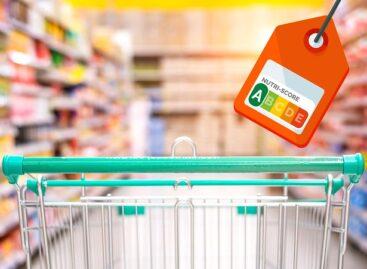Nutrition labelling battle – who will win and what do consumers understand from all this?
On the second day of Trade magazin’s Business Days conference, nutrition expert Emese Antal introduced the results of a TÉT Platform survey from August.

Emese Antal
scientific manager
TÉT Platform Association
Soon the European Union will decide which type of front-of-pack labelling member states have to introduce. Several systems are battling at the moment, and after the final decisions EU countries will have 6-12 months to prepare for the nutrition labelling system’s introduction. TÉT Platform’s survey has found that health consciousness isn’t strong in Hungary, and public health isn’t in a good situation either. Hungarians eat too much fat, fruit and vegetable consumption has dropped shockingly, and the average Hungarian doesn’t follow a physically active lifestyle.
Back in 2016 TÉT Platform commissioned a survey from GfK. This revealed that the average shopper spends 0.1 second with reading a food product’s label, typically checking out the expiry date. 88% of respondents didn’t miss anything from the label, and 21% didn’t understand the information on the label and how the info can be used in practice.
Food needs to be fresh, but a log shelf life is even better
The new study was made in August 2022, with the participation of 3,288 households. It found that shoppers are increasingly price-sensitive (88%), and what they really want from food products is freshness; however, compared with last year, 7% more people said they also want their food to have a long shelf life. It turned out that shoppers associate the “nutritious, rich in nutrients” marking with quality, naturalness and enjoyment.
57% of respondents read the label on food products – usually those who buy a certain product for the first time, or when the packaging changes. When asked whether they are satisfied with the information on the label, 44% said they are satisfied. The big question is whether they understand the information they are reading.
Key word: transparency
As for front-of-pack (FOP) labelling, 52% of consumers said it is a good idea to have this on food products. What they expect from FOP labelling is to be simple and easy to understand. Consumers want transparent nutrition information and the place of production to be indicated. From the different types of nutrition information, it is still added sugar that consumers concentrate on. It seems that they are hardly interested in calorie content, which is odd considering the fact that 67% of adults are overweight or obese in Hungary.
Health consciousness and more information
Current nutrition information on food labels are easy to understand for 44% of respondents. On average Hungarian shoppers check 9 elements on a food label. From these 4 have an influence on them, but from these 4 they don’t understand 2 or 3, which fact they admit. 51% of consumers don’t understand what they see. 85% know the present nutrition labelling system and 69% said the information is understandable. 45% would like help when shopping in the form of front-of-pack labels on pre-packaged groceries. Actually shoppers would like to see even more information – 40% said a QR code would be useful, containing more info. //
This article is available for reading in Trade magazin 2022/11
Related news
Food Labels May Fool EU Consumers, New Report Warns
Consumers can easily get lost in a maze of food…
Read more >Portugal’s new government reverses Nutri-Score pack labelling plan
Lisbon’s former government had proposed to adopt the traffic-light labelling…
Read more >Sustainability efforts can only be achieved through joint action
Sustainability is a horizontal issue, in connection with which all…
Read more >Related news
On self-acceptance, self-liberation and the gift of everyday life – We were learning together (Business Days 2024 Part 2)
On Friday at the Business Days conference it was all…
Read more >Brand footprint – or what do Coca-Cola, Kinder and Riska have in common?
The results of the Brand Footprint research coordinated by CPS-YouGov…
Read more >







